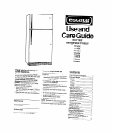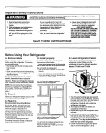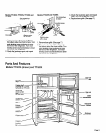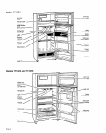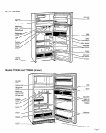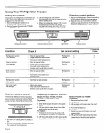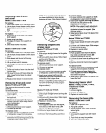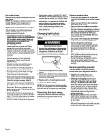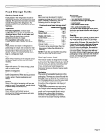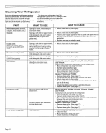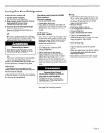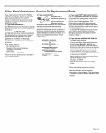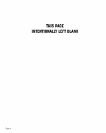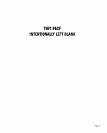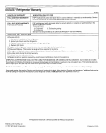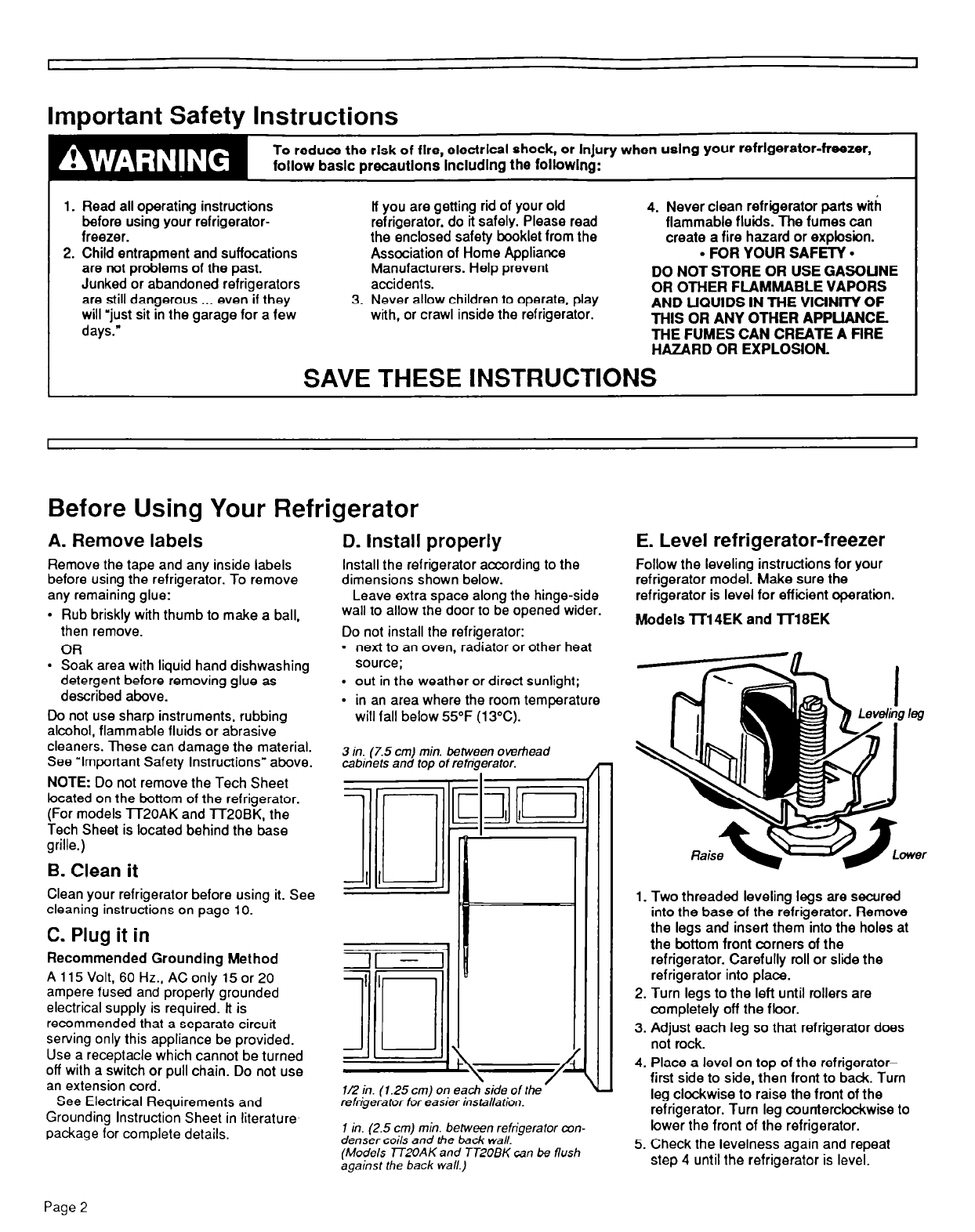
Important Safety Instructions
To reduce the rlsk of fire, electrical shock, or Injury when using your refrigerator-freezer,
follow basic precautions lncludlng the followlng:
1. Read all operating instructions
before using your refrigerator-
freezer.
2. Child entrapment and suffocations
are not problems of the past.
Junked or abandoned refrigerators
are still dangerous . . . even if they
will “just sit in the garage for a few
days.”
tl you are getting rid of your old
refrigerator, do it safely. Please read
the enclosed safety booklet from the
Association of Home Appliance
Manufacturers. Help prevent
accidents.
3. Never allow children to operate, play
with, or crawl inside the refrigerator.
4. Never clean refrigerator parts witk
flammable fluids. The fumes can
create a fire hazard or explosion.
. FOR YOUR SAFETY
l
DO NOT STORE OR USE GASOLINE
OR OTHER FLAMMABLE VAPORS
AND UQUIDS IN THE VlClNfTY OF
THIS OR ANY OTHER APPLlANCE.
THE FUMES CAN CREATE A FfRE
HAZARD OR EXPLOSION.
SAVE THESE INSTRUCTIONS
I
Before Using Your Refrigerator
A. Remove labels
Remove the tape and any inside labels
before using the refrigerator. To remove
any remaining glue:
l
Rub briskly with thumb to make a ball,
then remove.
OR
l
Soak area with liquid hand dishwashing
detergent before removing glue as
described above.
Do not use sharp instruments, rubbing
alcohol, flammable fluids or abrasive
cleaners. These can damage the material.
See ‘Important Safety Instructions” above.
NOTE: Do not remove the Tech Sheet
located on the bottom of the refrigerator.
(For models lT20AK and lT20BK, the
Tech Sheet is located behind the base
grille.)
B. Clean it
Clean your refrigerator before using it. See
cleaning instructions on page IO.
C. Plug it in
Recommended Grounding Method
A 115 Volt, 60 Hz., AC only 15 or 20
ampere fused and properly grounded
electrical supply is required. lt is
recommended that a separate circuit
serving only this appliance be provided.
Use a receptacle which cannot be turned
off wilh a switch or pull chain. Do not use
an extension cord.
See Electrical Requirements and
Grounding Instruction Sheet in literature
package for complete details.
D. Install properly
Install the refrigerator aazording to the
dimensions shown below.
Leave extra space along the hinge-side
wall to allow the door to be opened wider.
Do not install the refrigerator:
l
next to an oven, radiator or other heat
source;
l
out in the weather or direct sunlight;
l
in an area where the room temperature
will fall below 55°F (13%).
3 in. (7.5 cm) min. between overhead
cabinets and top ol refrigerator.
l/2 in. (1.25 cm) on each side of the
refrigerator for easier installation.
1 in. (2.5 cm) min. between refrigerator wn-
denser coils and the back wall.
(Models n2OAK and TTZOBK can be flush
against the back wall.)
E. Level refrigerator-freezer
Follow the leveling instructions for your
refrigerator model. Make sure the
refrigerator is level for efficient operation.
Models lTl4EK and ITl8EK
1. Two threaded leveling legs are secured
into the base of the refrigerator. Remove
the legs and insert them into the holes at
the bottom front corners of the
refrigerator. Carefully roll or slide the
refrigerator into place.
2. Turn legs to the left until rollers are
completely off the floor.
3. Adjust each leg so that refrigerator does
not rock.
4. Place a level on top of the refrigerator-
first side to side, then front to back. Turn
leg clockwise to raise the front of the
refrigerator. Turn leg counterclockwise to
lower the front of the refrigerator.
5. Check the levelness again and repeat
step 4 until the refrigerator is level.
Page 2



